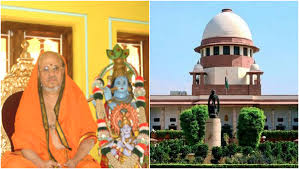Jagmohan vs. Badri Nath [February 06, 2024]
Background
The case centered on the right of pre-emption under the Punjab Pre-emption Act, 1913, as it applied to urban immovable property. The respondents (Badri Nath and others) had been tenants of a plot with a rolling mill in Jagadhri, Haryana, since 1949. When the owners sold the property to Jagmohan and another in 1983, the tenants filed a suit for possession by pre-emption in 1984, asserting their statutory right to purchase the property in preference to the buyers.
Key Legal Issues
Whether the right of pre-emption under the Punjab Pre-emption Act, 1913, survived after a State Government notification dated 08.10.1985, which excluded “land” in municipal areas from the Act’s operation.
Whether the property in question, which included constructed premises (a rolling mill), qualified as “land” or “immovable property” under the Act.
The effect of the notification on pending suits for pre-emption and the limitation period for filing such suits.
Supreme Court’s Analysis
The Supreme Court clarified the distinction between “land” and “immovable property” as used in the Punjab Pre-emption Act. “Immovable property” was held to be broader than “land” and included land with permanent constructions such as buildings or mills.
The notification dated 08.10.1985, issued under Section 8(2) of the Act, withdrew the right of pre-emption only in respect of “land” within municipal areas, not urban immovable property with constructions. Since the property in dispute had a rolling mill, it was classified as immovable property, not mere land.
The Court held that the right of pre-emption for tenants in urban immovable property was not extinguished by the notification and that the tenants’ suit was maintainable.
Regarding limitation, the Court considered the date of registration of the sale deed, the date of suit filing, and the date of the trial court decree, confirming that the right of pre-emption must exist on all three dates. The suit, filed within a year of the sale deed’s registration, was held to be within limitation.
The Court upheld the concurrent findings of the trial court and the High Court, both of which had decreed the suit in favor of the tenants, allowing them to purchase the property by paying the same consideration as the buyers.
Judgment
The Supreme Court dismissed the appeal by the purchasers (Jagmohan and another), affirming the tenants’ right of pre-emption over urban immovable property. The notification exempting “land” did not apply to the property in question, as it was classified as immovable property due to the presence of the rolling mill. The tenants were entitled to purchase the property upon payment of the sale consideration.
Significance
This decision is a significant clarification on the scope of pre-emption rights in urban settings, especially distinguishing between “land” and “immovable property” under the Punjab Pre-emption Act, 1913. It upholds the statutory protection for tenants seeking to pre-empt sales of properties with constructions in municipal areas.
Citation:
Jagmohan and Another v. Badri Nath and Others, Civil Appeal No. 1753 of 2024; [2024] 2 S.C.R. 123; 2024 INSC 86; Supreme Court of India, decided on February 06, 2024.






























0 comments